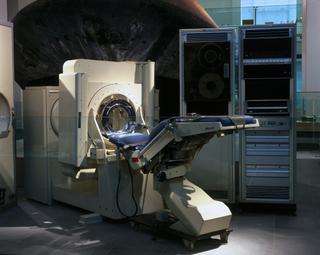
Sir Godfrey Newbold Hounsfield was an English electrical engineer, who shared the 1979 Nobel Prize for medicine with Allan Cormack for his pioneering work on the application of computer techniques to X-ray examination of the human body.
Hounsfield and Cormack independently developed the diagnostic technique of computer tomography (CT). In this technique, X-ray readings are taken at all angles by a scanner rotating around the patient. This information is then combined to visualise 'slices' of the human body.
Hounsfield initially tested his prototype head scanner on a preserved human brain, then on a cow's brain sourced from a butcher’s shop, before testing the device on himself. In 1971, CT scanning was applied in medical practice, and by 1975 Hounsfield had built a whole-body scanner.
Today Hounsfield’s name lives on in the ‘Hounsfield Scale’, a quantitative measure of radiodensity used to evaluate CT scans.